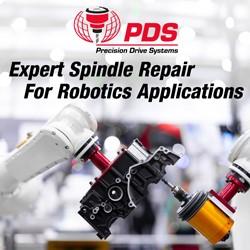Technology gap gives foreign firms the edge in China robot wars
Building a Rope Bridge With Flying Machines
OMRON to Acquire U.S. Based Adept Technology
WowWee brings expensive university bots to store shelves
7Bot: $300 6-axis Aluminum Desktop Robot Arm
5 Robotics Stocks to Watch
Star Wars The Force Awakens BB-8 Toy Teardown
Soft Robotics Project Exo-Biote 3D Prints Living Movement
Toyota hires robotics expert for AI push
Bucky Fuller Friday
Robotics Enter Hybrid Instruction
Intel camera gives robots 3D vision
Robot That Copies Artist's Exact Strokes To Replicate A Painting In 3D
Why being able to 3-D print glass objects is such a big deal
Here comes the drone backlash
Records 1231 to 1245 of 1673
First | Previous | Next | Last
Featured Product

Precision Drive Systems - Trust PDS for 3-5 Day Robotic Spindle Repair
Robotics and Automation - Featured Company

